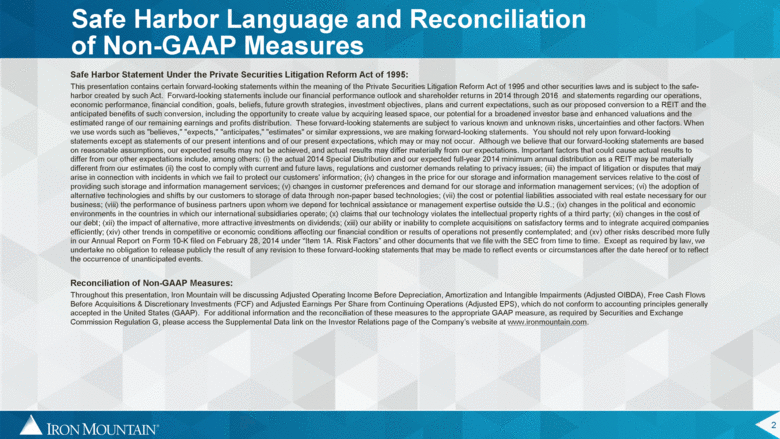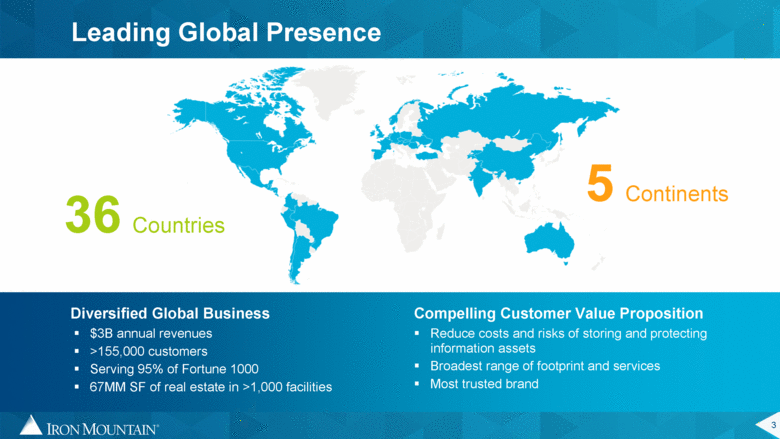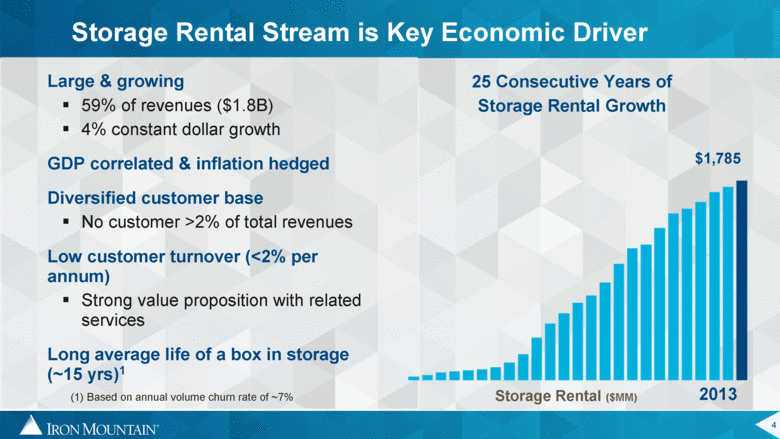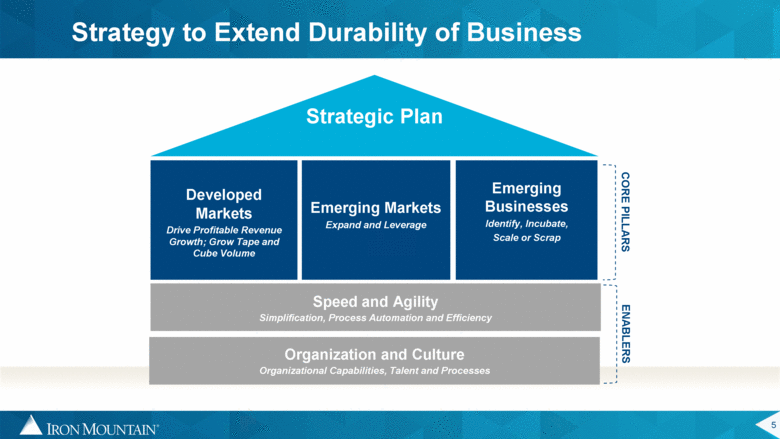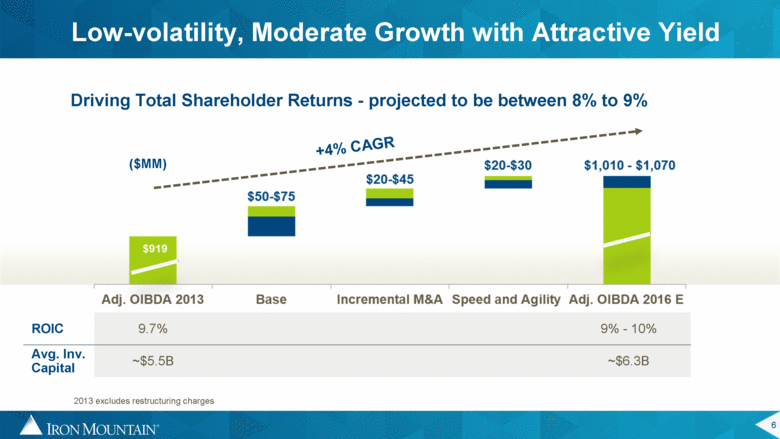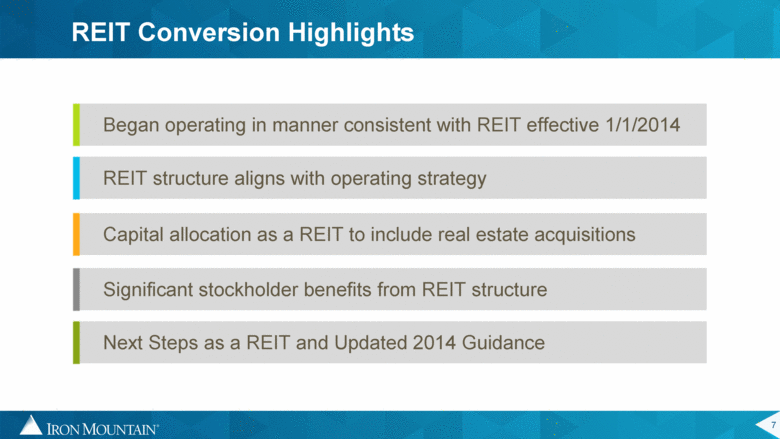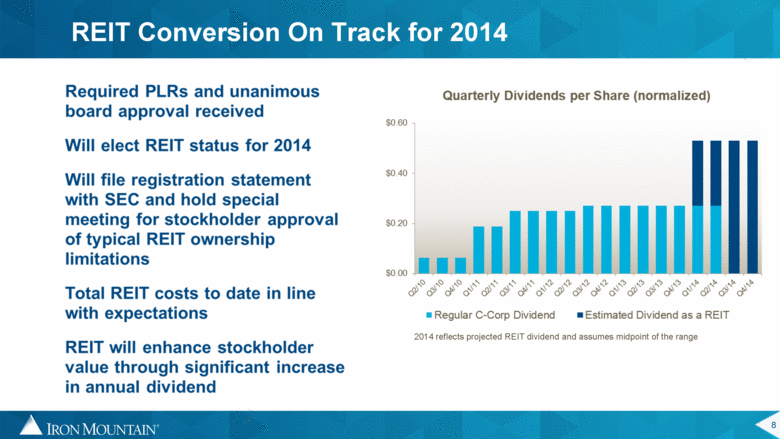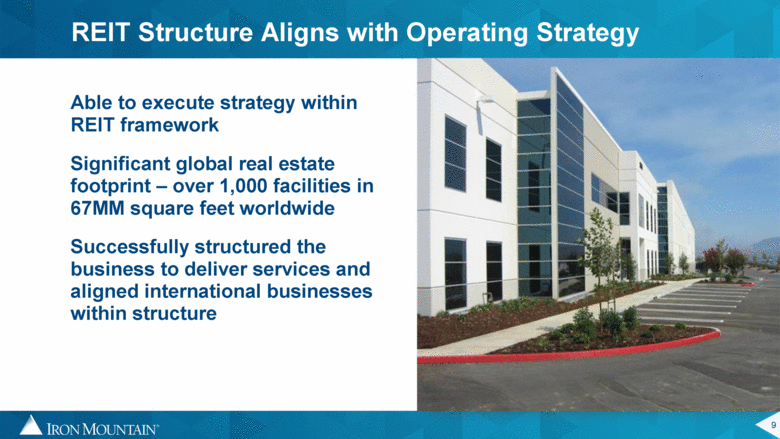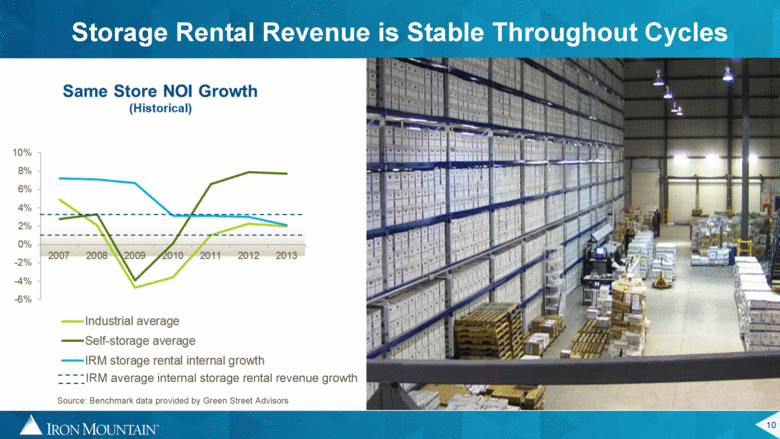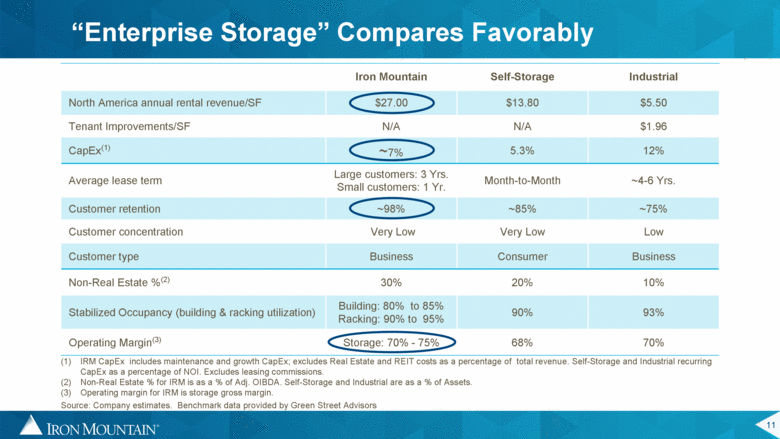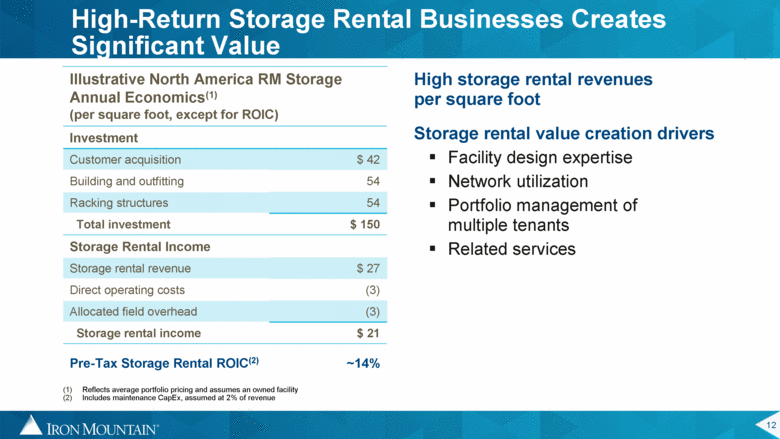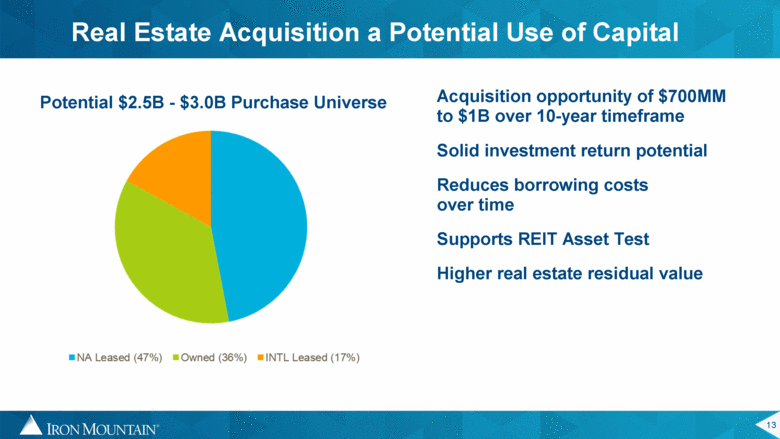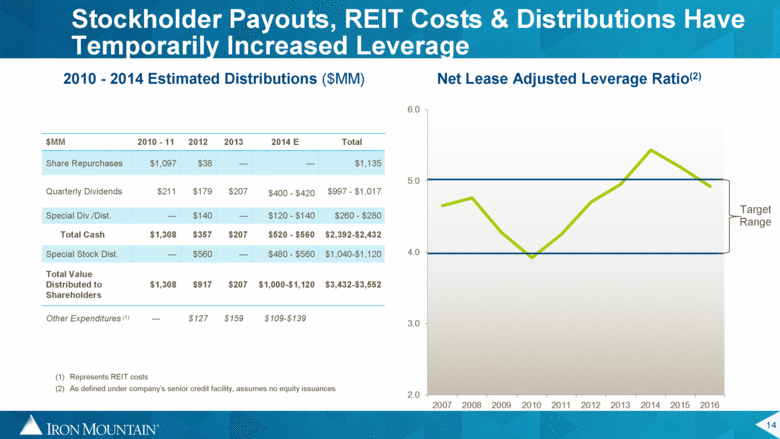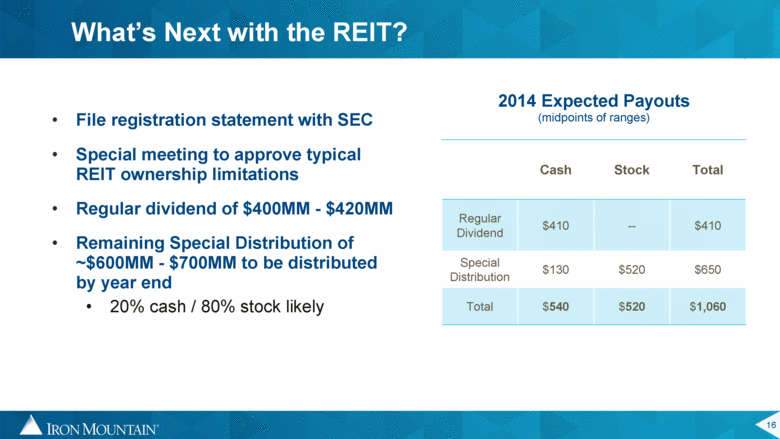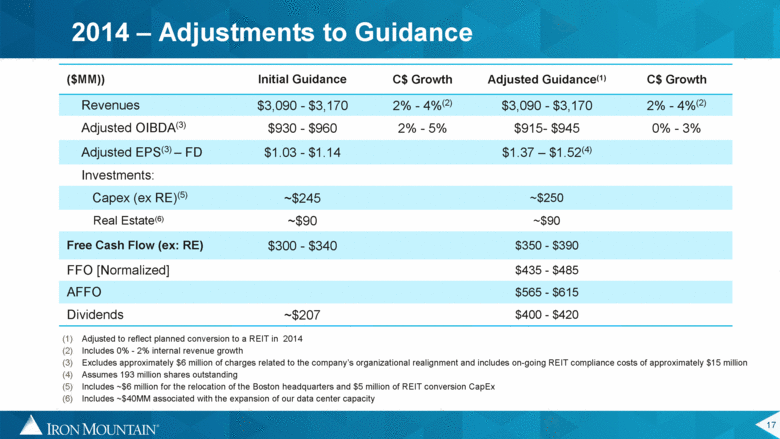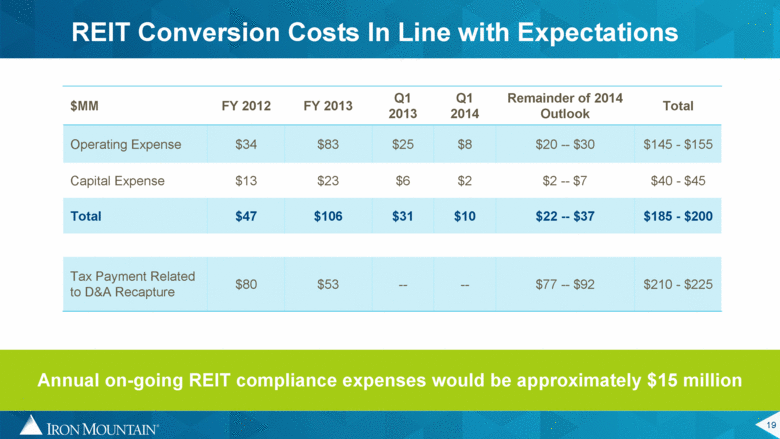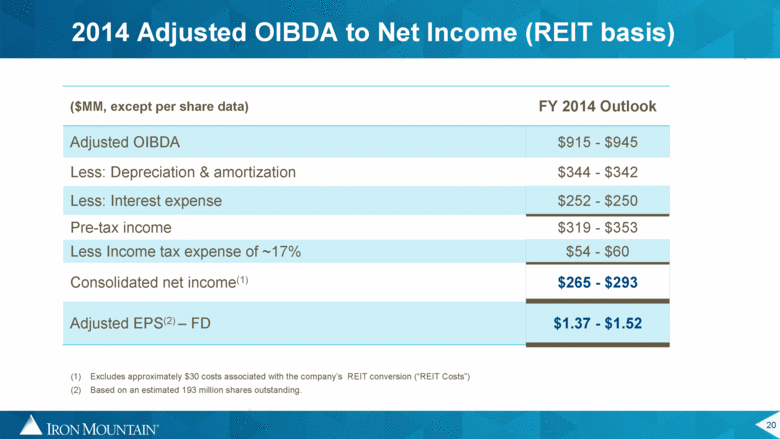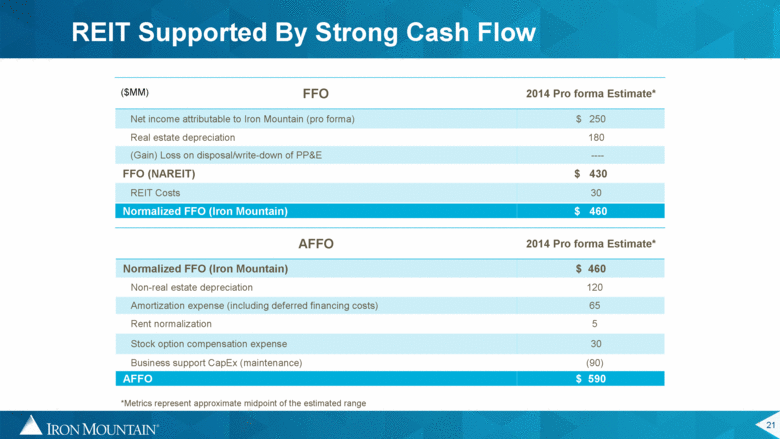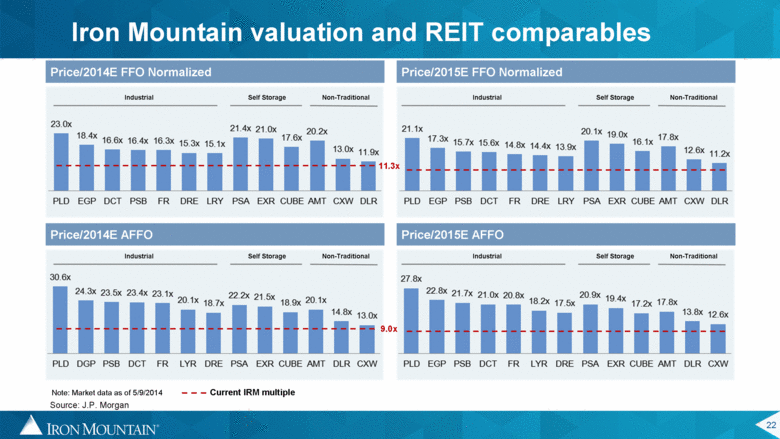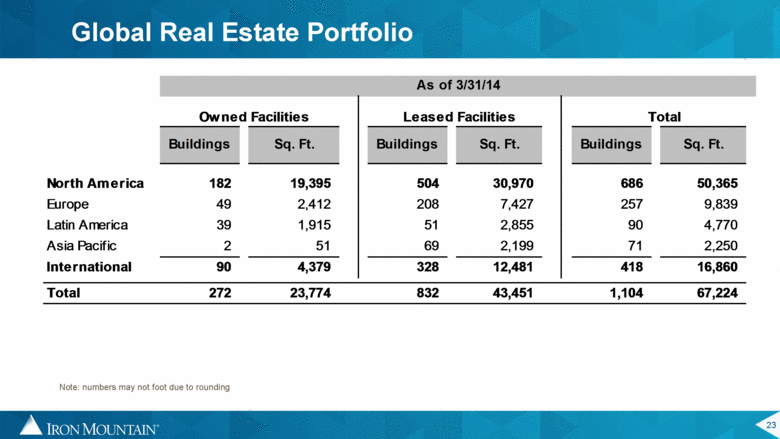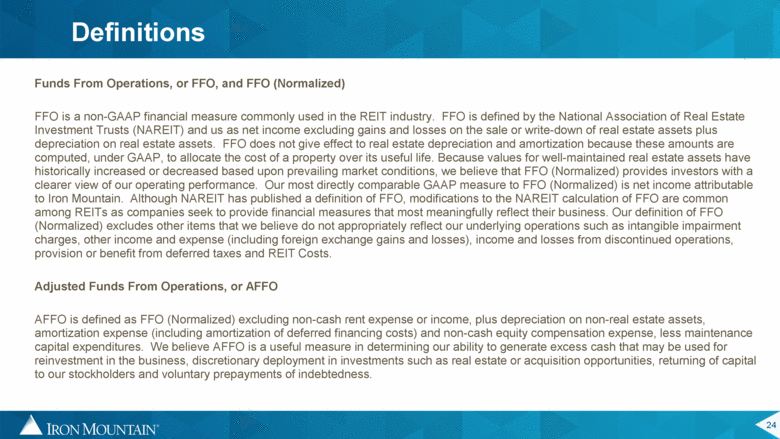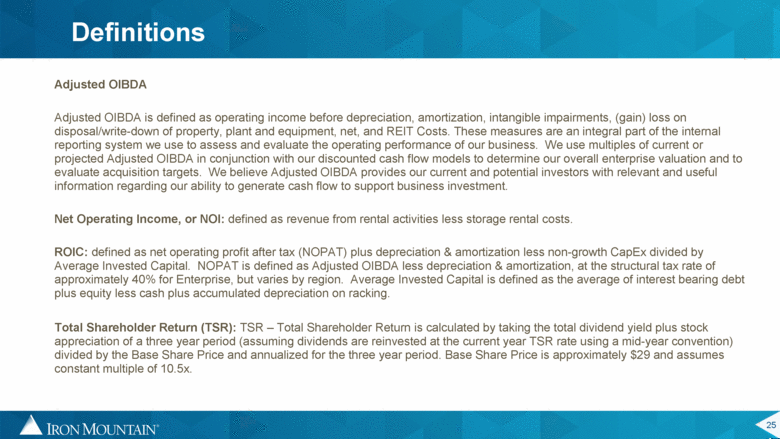Exhibit 99.1
| REIT Conversion to Enhance Stockholder Returns June 26, 2014 |
| Safe Harbor Language and Reconciliation of Non-GAAP Measures Safe Harbor Statement Under the Private Securities Litigation Reform Act of 1995: This presentation contains certain forward-looking statements within the meaning of the Private Securities Litigation Reform Act of 1995 and other securities laws and is subject to the safe-harbor created by such Act. Forward-looking statements include our financial performance outlook and shareholder returns in 2014 through 2016 and statements regarding our operations, economic performance, financial condition, goals, beliefs, future growth strategies, investment objectives, plans and current expectations, such as our proposed conversion to a REIT and the anticipated benefits of such conversion, including the opportunity to create value by acquiring leased space, our potential for a broadened investor base and enhanced valuations and the estimated range of our remaining earnings and profits distribution. These forward-looking statements are subject to various known and unknown risks, uncertainties and other factors. When we use words such as "believes," "expects," "anticipates," "estimates" or similar expressions, we are making forward-looking statements. You should not rely upon forward-looking statements except as statements of our present intentions and of our present expectations, which may or may not occur. Although we believe that our forward-looking statements are based on reasonable assumptions, our expected results may not be achieved, and actual results may differ materially from our expectations. Important factors that could cause actual results to differ from our other expectations include, among others: (i) the actual 2014 Special Distribution and our expected full-year 2014 minimum annual distribution as a REIT may be materially different from our estimates (ii) the cost to comply with current and future laws, regulations and customer demands relating to privacy issues; (iii) the impact of litigation or disputes that may arise in connection with incidents in which we fail to protect our customers' information; (iv) changes in the price for our storage and information management services relative to the cost of providing such storage and information management services; (v) changes in customer preferences and demand for our storage and information management services; (vi) the adoption of alternative technologies and shifts by our customers to storage of data through non-paper based technologies; (vii) the cost or potential liabilities associated with real estate necessary for our business; (viii) the performance of business partners upon whom we depend for technical assistance or management expertise outside the U.S.; (ix) changes in the political and economic environments in the countries in which our international subsidiaries operate; (x) claims that our technology violates the intellectual property rights of a third party; (xi) changes in the cost of our debt; (xii) the impact of alternative, more attractive investments on dividends; (xiii) our ability or inability to complete acquisitions on satisfactory terms and to integrate acquired companies efficiently; (xiv) other trends in competitive or economic conditions affecting our financial condition or results of operations not presently contemplated; and (xv) other risks described more fully in our Annual Report on Form 10-K filed on February 28, 2014 under “Item 1A. Risk Factors” and other documents that we file with the SEC from time to time. Except as required by law, we undertake no obligation to release publicly the result of any revision to these forward-looking statements that may be made to reflect events or circumstances after the date hereof or to reflect the occurrence of unanticipated events. Reconciliation of Non-GAAP Measures: Throughout this presentation, Iron Mountain will be discussing Adjusted Operating Income Before Depreciation, Amortization and Intangible Impairments (Adjusted OIBDA), Free Cash Flows Before Acquisitions & Discretionary Investments (FCF) and Adjusted Earnings Per Share from Continuing Operations (Adjusted EPS), which do not conform to accounting principles generally accepted in the United States (GAAP). For additional information and the reconciliation of these measures to the appropriate GAAP measure, as required by Securities and Exchange Commission Regulation G, please access the Supplemental Data link on the Investor Relations page of the Company’s website at www.ironmountain.com. |
| Diversified Global Business $3B annual revenues >155,000 customers Serving 95% of Fortune 1000 67MM SF of real estate in >1,000 facilities Compelling Customer Value Proposition Reduce costs and risks of storing and protecting information assets Broadest range of footprint and services Most trusted brand Leading Global Presence 36 Countries 5 Continents |
| Large & growing 59% of revenues ($1.8B) 4% constant dollar growth GDP correlated & inflation hedged Diversified customer base No customer >2% of total revenues Low customer turnover (<2% per annum) Strong value proposition with related services Long average life of a box in storage (~15 yrs)1 Storage Rental Stream is Key Economic Driver (1) Based on annual volume churn rate of ~7% 25 Consecutive Years of Storage Rental Growth $1,785 2013 Storage Rental ($MM) |
| Strategy to Extend Durability of Business Speed and Agility Simplification, Process Automation and Efficiency Developed Markets Drive Profitable Revenue Growth; Grow Tape and Cube Volume Strategic Plan Emerging Markets Expand and Leverage Emerging Businesses Identify, Incubate, Scale or Scrap Organization and Culture Organizational Capabilities, Talent and Processes CORE PILLARS ENABLERS |
| Low-volatility, Moderate Growth with Attractive Yield Driving Total Shareholder Returns - projected to be between 8% to 9% 2013 excludes restructuring charges ROIC 9.7% 9% - 10% Avg. Inv. Capital ~$5.5B ~$6.3B ($MM) +4% CAGR |
| REIT Conversion Highlights Began operating in manner consistent with REIT effective 1/1/2014 REIT structure aligns with operating strategy Capital allocation as a REIT to include real estate acquisitions Significant stockholder benefits from REIT structure Next Steps as a REIT and Updated 2014 Guidance |
| REIT Conversion On Track for 2014 2014 reflects projected REIT dividend and assumes midpoint of the range |
| Able to execute strategy within REIT framework Significant global real estate footprint – over 1,000 facilities in 67MM square feet worldwide Successfully structured the business to deliver services and aligned international businesses within structure REIT Structure Aligns with Operating Strategy |
| Storage Rental Revenue is Stable Throughout Cycles Source: Benchmark data provided by Green Street Advisors IRM average internal storage rental revenue growth |
| “Enterprise Storage” Compares Favorably Iron Mountain Self-Storage Industrial North America annual rental revenue/SF $27.00 $13.80 $5.50 Tenant Improvements/SF N/A N/A $1.96 CapEx(1) ~7% 5.3% 12% Average lease term Large customers: 3 Yrs. Small customers: 1 Yr. Month-to-Month ~4-6 Yrs. Customer retention ~98% ~85% ~75% Customer concentration Very Low Very Low Low Customer type Business Consumer Business Non-Real Estate %(2) 30% 20% 10% Stabilized Occupancy (building & racking utilization) Building: 80% to 85% Racking: 90% to 95% 90% 93% Operating Margin(3) Storage: 70% - 75% 68% 70% IRM CapEx includes maintenance and growth CapEx; excludes Real Estate and REIT costs as a percentage of total revenue. Self-Storage and Industrial recurring CapEx as a percentage of NOI. Excludes leasing commissions. Non-Real Estate % for IRM is as a % of Adj. OIBDA. Self-Storage and Industrial are as a % of Assets. Operating margin for IRM is storage gross margin. Source: Company estimates. Benchmark data provided by Green Street Advisors |
| Illustrative North America RM Storage Annual Economics(1) (per square foot, except for ROIC) Investment Customer acquisition $ 42 Building and outfitting 54 Racking structures 54 Total investment $ 150 Storage Rental Income Storage rental revenue $ 27 Direct operating costs (3) Allocated field overhead (3) Storage rental income $ 21 Pre-Tax Storage Rental ROIC(2) ~14% High storage rental revenues per square foot Storage rental value creation drivers Facility design expertise Network utilization Portfolio management of multiple tenants Related services High-Return Storage Rental Businesses Creates Significant Value Reflects average portfolio pricing and assumes an owned facility Includes maintenance CapEx, assumed at 2% of revenue |
| Acquisition opportunity of $700MM to $1B over 10-year timeframe Solid investment return potential Reduces borrowing costs over time Supports REIT Asset Test Higher real estate residual value Real Estate Acquisition a Potential Use of Capital Potential $2.5B - $3.0B Purchase Universe |
| Target Range Stockholder Payouts, REIT Costs & Distributions Have Temporarily Increased Leverage $MM 2010 - 11 2012 2013 2014 E Total Share Repurchases $1,097 $38 --- --- $1,135 Quarterly Dividends $211 $179 $207 $400 - $420 $997 - $1,017 Special Div./Dist. --- $140 --- $120 - $140 $260 - $280 Total Cash $1,308 $357 $207 $520 - $560 $2,392-$2,432 Special Stock Dist. --- $560 --- $480 - $560 $1,040-$1,120 Total Value Distributed to Shareholders $1,308 $917 $207 $1,000-$1,120 $3,432-$3,552 Other Expenditures (1) --- $127 $159 $109-$139 2010 - 2014 Estimated Distributions ($MM) Represents REIT costs As defined under company’s senior credit facility, assumes no equity issuances Net Lease Adjusted Leverage Ratio(2) |
| Three Key Value Drivers Higher dividends over time supported by: US federal and state income tax savings Higher distributable income due to lower tax vs. book D&A Both US and international storage rental (QRS) income Potential to create value and reduce financing costs through acquisition of select leased facilities Potential to expand investor base through higher yield and attractive business characteristics REIT Will Provide Significant Stockholder Benefits Excludes $130MM cash portion of the 2014 special distribution Based on 193MM shares outstanding Includes ~$70MM benefit from book / tax difference for depreciation associated with racking |
| File registration statement with SEC Special meeting to approve typical REIT ownership limitations Regular dividend of $400MM - $420MM Remaining Special Distribution of ~$600MM - $700MM to be distributed by year end 20% cash / 80% stock likely What’s Next with the REIT? Cash Stock Total Regular Dividend $410 -- $410 Special Distribution $130 $520 $650 Total $540 $520 $1,060 2014 Expected Payouts (midpoints of ranges) |
| Adjusted to reflect planned conversion to a REIT in 2014 Includes 0% - 2% internal revenue growth Excludes approximately $6 million of charges related to the company’s organizational realignment and includes on-going REIT compliance costs of approximately $15 million Assumes 193 million shares outstanding Includes ~$6 million for the relocation of the Boston headquarters and $5 million of REIT conversion CapEx Includes ~$40MM associated with the expansion of our data center capacity ($MM)) Initial Guidance C$ Growth Adjusted Guidance(1) C$ Growth Revenues $3,090 - $3,170 2% - 4%(2) $3,090 - $3,170 2% - 4%(2) Adjusted OIBDA(3) $930 - $960 2% - 5% $915- $945 0% - 3% Adjusted EPS(3) – FD $1.03 - $1.14 $1.37 – $1.52(4) Investments: Capex (ex RE)(5) ~$245 ~$250 Real Estate(6) ~$90 ~$90 Free Cash Flow (ex: RE) $300 - $340 $350 - $390 FFO [Normalized] $435 - $485 AFFO $565 - $615 Dividends ~$207 $400 - $420 2014 – Adjustments to Guidance |
| Appendix |
| REIT Conversion Costs In Line with Expectations $MM FY 2012 FY 2013 Q1 2013 Q1 2014 Remainder of 2014 Outlook Total Operating Expense $34 $83 $25 $8 $20 -- $30 $145 - $155 Capital Expense $13 $23 $6 $2 $2 -- $7 $40 - $45 Total $47 $106 $31 $10 $22 -- $37 $185 - $200 Tax Payment Related to D&A Recapture $80 $53 -- -- $77 -- $92 $210 - $225 Annual on-going REIT compliance expenses would be approximately $15 million |
| 2014 Adjusted OIBDA to Net Income (REIT basis) Excludes approximately $30 costs associated with the company’s REIT conversion (“REIT Costs”) Based on an estimated 193 million shares outstanding. ($MM, except per share data) FY 2014 Outlook Adjusted OIBDA $915 - $945 Less: Depreciation & amortization $344 - $342 Less: Interest expense $252 - $250 Pre-tax income $319 - $353 Less Income tax expense of ~17% $54 - $60 Consolidated net income(1) $265 - $293 Adjusted EPS(2) – FD $1.37 - $1.52 |
| REIT Supported By Strong Cash Flow FFO 2014 Pro forma Estimate* Net income attributable to Iron Mountain (pro forma) $ 250 Real estate depreciation 180 (Gain) Loss on disposal/write-down of PP&E ---- FFO (NAREIT) $ 430 REIT Costs 30 Normalized FFO (Iron Mountain) $ 460 AFFO 2014 Pro forma Estimate* Normalized FFO (Iron Mountain) $ 460 Non-real estate depreciation 120 Amortization expense (including deferred financing costs) 65 Rent normalization 5 Stock option compensation expense 30 Business support CapEx (maintenance) (90) AFFO $ 590 *Metrics represent approximate midpoint of the estimated range ($MM) |
| Iron Mountain valuation and REIT comparables Price/2014E FFO Normalized Price/2015E FFO Normalized Price/2014E AFFO Price/2015E AFFO 9.0x 11.3x Industrial Self Storage Non-Traditional Industrial Self Storage Non-Traditional Industrial Self Storage Non-Traditional Industrial Self Storage Non-Traditional Note: Market data as of 5/9/2014 Current IRM multiple Source: J.P. Morgan |
| Global Real Estate Portfolio Note: numbers may not foot due to rounding As of 3/31/14 Buildings Sq. Ft. Buildings Sq. Ft. Buildings Sq. Ft. North America 182 19,395 504 30,970 686 50,365 Europe 49 2,412 208 7,427 257 9,839 Latin America 39 1,915 51 2,855 90 4,770 Asia Pacific 2 51 69 2,199 71 2,250 International 90 4,379 328 12,481 418 16,860 Total 272 23,774 832 43,451 1,104 67,224 Total Leased Facilities Owned Facilities |
| Definitions Funds From Operations, or FFO, and FFO (Normalized) FFO is a non-GAAP financial measure commonly used in the REIT industry. FFO is defined by the National Association of Real Estate Investment Trusts (NAREIT) and us as net income excluding gains and losses on the sale or write-down of real estate assets plus depreciation on real estate assets. FFO does not give effect to real estate depreciation and amortization because these amounts are computed, under GAAP, to allocate the cost of a property over its useful life. Because values for well-maintained real estate assets have historically increased or decreased based upon prevailing market conditions, we believe that FFO (Normalized) provides investors with a clearer view of our operating performance. Our most directly comparable GAAP measure to FFO (Normalized) is net income attributable to Iron Mountain. Although NAREIT has published a definition of FFO, modifications to the NAREIT calculation of FFO are common among REITs as companies seek to provide financial measures that most meaningfully reflect their business. Our definition of FFO (Normalized) excludes other items that we believe do not appropriately reflect our underlying operations such as intangible impairment charges, other income and expense (including foreign exchange gains and losses), income and losses from discontinued operations, provision or benefit from deferred taxes and REIT Costs. Adjusted Funds From Operations, or AFFO AFFO is defined as FFO (Normalized) excluding non-cash rent expense or income, plus depreciation on non-real estate assets, amortization expense (including amortization of deferred financing costs) and non-cash equity compensation expense, less maintenance capital expenditures. We believe AFFO is a useful measure in determining our ability to generate excess cash that may be used for reinvestment in the business, discretionary deployment in investments such as real estate or acquisition opportunities, returning of capital to our stockholders and voluntary prepayments of indebtedness. |
| Definitions Adjusted OIBDA Adjusted OIBDA is defined as operating income before depreciation, amortization, intangible impairments, (gain) loss on disposal/write-down of property, plant and equipment, net, and REIT Costs. These measures are an integral part of the internal reporting system we use to assess and evaluate the operating performance of our business. We use multiples of current or projected Adjusted OIBDA in conjunction with our discounted cash flow models to determine our overall enterprise valuation and to evaluate acquisition targets. We believe Adjusted OIBDA provides our current and potential investors with relevant and useful information regarding our ability to generate cash flow to support business investment. Net Operating Income, or NOI: defined as revenue from rental activities less storage rental costs. ROIC: defined as net operating profit after tax (NOPAT) plus depreciation & amortization less non-growth CapEx divided by Average Invested Capital. NOPAT is defined as Adjusted OIBDA less depreciation & amortization, at the structural tax rate of approximately 40% for Enterprise, but varies by region. Average Invested Capital is defined as the average of interest bearing debt plus equity less cash plus accumulated depreciation on racking. Total Shareholder Return (TSR): TSR – Total Shareholder Return is calculated by taking the total dividend yield plus stock appreciation of a three year period (assuming dividends are reinvested at the current year TSR rate using a mid-year convention) divided by the Base Share Price and annualized for the three year period. Base Share Price is approximately $29 and assumes constant multiple of 10.5x. |

